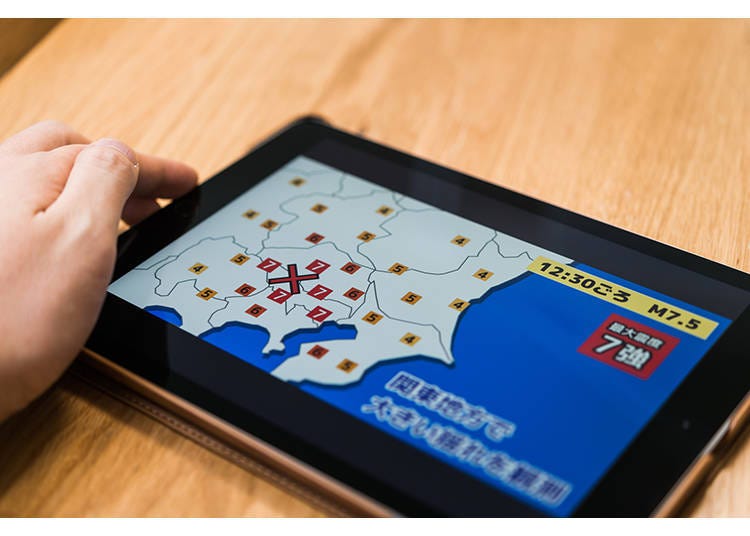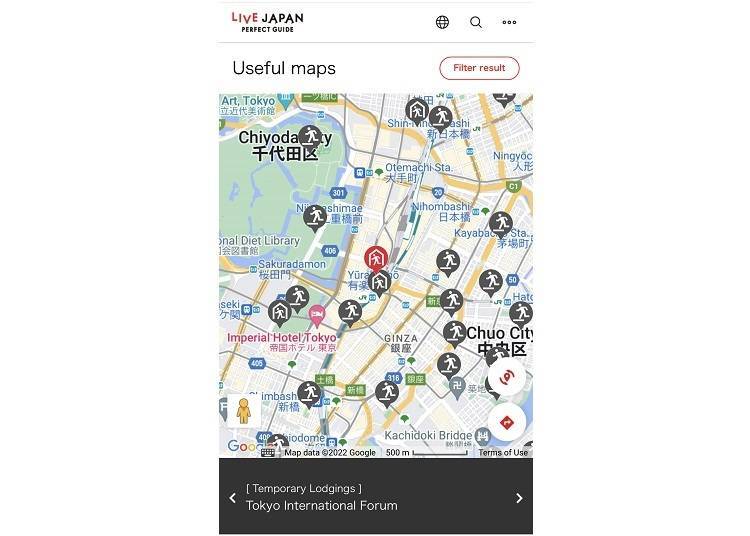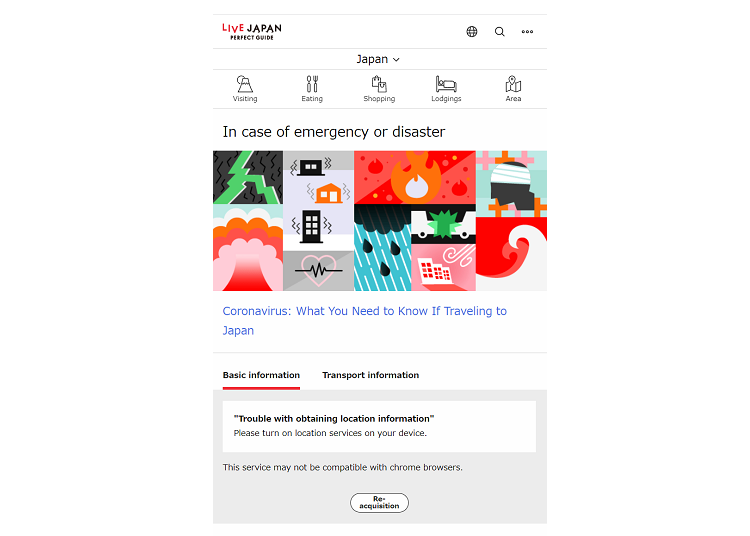
What to do if you’re in Tokyo when a disaster strikes? Get familiar with evacuation sites and shelters
- Written by: Miyu Shimada
Globally speaking, Japan experiences a relatively large number of natural disasters. Perhaps you might even know Japan as a “country with many earthquakes?” In truth, however, earthquakes are only one danger: there are typhoons, flooding from concentrated rainfall, river overflows, landslides, storm surges, volcanic activity, and more.
Even if you’re just visiting, it bears consideration. This article will cover various potential disasters, how to handle them, and earthquake evacuation sites and shelters.
Main image: PIXTA
What disasters could strike Tokyo?

Tokyo may be Japan’s capital, but it has a high risk of natural disasters. If we look at the Global City Natural Disaster Risk Index as published by Japan’s Cabinet Office, Japanese cities like Tokyo, Yokohama, and Osaka far outrank other cities worldwide. Sitting at the top is, you guessed it, Tokyo.
You may imagine the danger of natural disasters to be focused around volcanoes or the ocean, but the reality is more complex. In particular, Tokyo is subject to some forms of disaster that can only occur in such a metropolis, and to secondary dangers that come after a disaster.
A few factors that go into Tokyo’s high risk level are its generally low elevation, and the many rivers of varying size that flow through it. As a metropolis, Tokyo has a massive population that congregates on transit systems, and giant companies and financial systems that form the bedrock of Japan’s economy. Thus the potential ramifications, or the “secondary dangers” of a disaster, are dire in casualties to life, governance, and mobility, more so than most parts of the world.
The three top disasters to watch out for in Tokyo are earthquakes, typhoons/heavy rainfall, and heavy snowfall.
Potential Tokyo Disasters 1: Earthquakes
As Japan is a very seismically active country, earthquakes are the first things to be wary of. The danger of a Tokyo-area hypocenter event or Nankai Trough “megathrust” earthquake is ever-present. In a single year, Tokyo experiences more than 170 earthquakes that register as one or greater on the JMA Seismic Intensity Scale. (2021 data:)
Earthquakes are some of the most difficult to predict of all natural disasters and can strike suddenly. Even on a short trip to Tokyo, you are more than likely to encounter an earthquake. Even if the direct damage of an earthquake is minor, it can affect vital utilities and transportation systems. Difficulty returning home is a common occurrence in the wake of an earthquake.
Potential Tokyo Disasters 2: Typhoons and Heavy Rainfall
Global climate change has made sudden downpours and heavy rainfall more frequent in recent years. Japan’s typhoon season between summer and fall also sees more typhoons making landfall. Flooding and powerful winds from these events can gravely affect life necessities. In addition to building water damage and destruction, flooding can also have long-lasting effects on utilities, including power and water outages.
Potential Tokyo Disasters 3: Heavy Snowfall
For Tokyo, even a light dusting of snow can cause major issues. Tokyo doesn’t get much heavy snow, but a few times a decade, a heavy snowfall warning is issued. Most affected by snow is the transportation system. Train and bus lines cease to function. Even the subways are hit by delays and service suspensions, and stretches of expressways are blocked off.
What should I do if I’m in Tokyo when a disaster hits?

So, what should one do if disaster strikes while living or sightseeing in Tokyo?
In the event of an earthquake in Tokyo
As earthquakes cannot be predicted, it is important to know what you should do before one strikes, and to take swift and appropriate action after it strikes.
The appropriate actions to take during an earthquake and after an earthquake are different, but first you should remember to ask for help from and work with the people in your immediate location, and do not try to move using your own judgment. For your safety, you should know about evacuation sites and shelters.
You can find more information here.
In the event of a typhoon or heavy rain in Tokyo
The water damage from typhoons and heavy rain can be forecasted to a certain extent. When a typhoon starts forming, you’ll have time to prepare for its landfall. Still, it helps to know what you need for such a scenario.
Stay current on weather conditions by watching the news, and never go outside during dangerous weather conditions.
You can find more information here.
In the event of heavy snowfall in Tokyo
As with flooding and winds, heavy snow can be forecasted. Tokyo and its surrounding area are surprisingly weak to snow. No matter the depth, its transit systems will be significantly affected. The standard course of action is to stay indoors where possible, but that may not always work if you’re visiting Tokyo on vacation. You can be prepared with winterproof clothing and gear and ensure your footwear has a proper grip. Stay current on travel information, and be proactive, not reactive.
Evacuation sites and shelters in Tokyo to know before an unexpected earthquake

When you’re living or traveling in Tokyo, there’s no way to know if an earthquake will hit, how hard it might hit, or if you’ll be directly affected. And when you’re traveling, there’s a limit to the amount of supplies you can carry. All the more reason to at least know about Tokyo’s evacuation sites and shelters.
・Evacuation Shelters
Evacuation shelters, or “temporary shelter facilities,” are places where people who are out and about, whether they be sightseeing, shopping, or unable to get home, can stay temporarily and await further safety instructions.
As of July 2022, Tokyo has 1213 evacuation shelters. Some of them are municipal and some of them are privately held, and still more are not made public ahead of time by request of their business operators. Some of them may be damaged in an earthquake and rendered unusable.
Thus, in the event of a major earthquake, use the information shared by local municipal governments about evacuation shelters currently accepting people.
・Evacuation Sites
These locations are chosen to protect citizens from the aftereffects of natural disasters like fire. They include parks, river terraces, housing complexes, schools, and other wide-open areas. As of July 2022, there are 221 such areas in Tokyo.
・Other Facilities
Still other facilities for evacuating after a natural disaster may be called “evacuation spots,” “temporary gathering areas,” or similar. Evacuation spots are, as you might expect, similar to evacuation sites: places to go after a disaster hits. They should have the equipment necessary to take refuge if the disaster has robbed you of a place to stay. Temporary gathering areas are spots where local citizens might first gather before heading to an evacuation site in order to gather information and move as groups. Schools, school yards, and parks are some of the wide-open areas chosen for gathering.
Find locations of evacuation shelters and sites on LIVE JAPAN’s “Handy Map”

LIVE JAPAN publishes a “Handy Map” that identifies evacuation shelters and sites.
▶https://livejapan.com/en/handymap/
From this page, you can find evacuation shelters and sites near you. It currently supports only Tokyo, but it should serve you well if that’s where you are.
Stay informed in emergencies and disasters with LIVE JAPAN’s “Disaster Info Site”

LIVE JAPAN also has a webpage for centralized access to helpful information during emergencies and disasters.
In addition to supplying you with locally relevant information, it also has valuable links for embassies, reports from the tourist bureau for international travelers, multilingual hospitals and clinics, and emergency contact information matched to the situation. We recommend keeping this page bookmarked so you can check back at a moment’s notice.
▶https://livejapan.com/en/emergency/
The best kind of disaster is the one that doesn’t happen! But be prepared if it does
Nobody wants to experience a disaster. However, you can never be sure when, where, or how it might happen. Earthquakes, in particular, are hard to predict, so of all the disasters, it’s the one you’re most likely to encounter on a visit to Tokyo. In any case, one should be prepared for the unforeseen and have info on Tokyo’s evacuation sites and shelters. They’ll keep you from getting isolated and help you safely weather the storm.
* This article reflects information available in October 2022. For the latest information, visit the official websites for each organization.
Miyu is a travel writer and tour conductor with over a decade of experience in developing educational content for working individuals. She has a passion for exploring new cultures and has visited more than 150 cities in around 50 countries. Her goal is to sample great food, experience nature, enjoy historical sites, and bathe in hot springs around the world. Miyu left her corporate job to pursue her passion for travel and now spends over 100 days a year abroad while working as a writer. She promotes the joy of travel, the beauty of Japan, and the diverse cultures of the world by traveling to different parts of Japan and collaborating with inbound tour operators and fellow travel writers.
- Area
- Category
*Prices and options mentioned are subject to change.
*Unless stated otherwise, all prices include tax.
Popular Tours & Activitiess
-

[Extended Offer!](12% OFF KKday Coupon) Mt. Fuji Autumn Leaves, Powder Snow & More! 15 Best Tours to Experience Japan in Fall & Winter
-

Simply Oishii Wagashi School Discover Japanese Culture Through Wagashi: A Hands-On Experience!
by: Guest Contributor
-

A Travel Game Changer! Go Hands-Free Between Tokyo and Kyoto with LUGGAGE EXPRESS by JTB and JR Tokai
by: Guest Contributor
-

New Seibu L00 Series Launching in 2026! What to See Along the Tokyo-Area Golden Route
by: Guest Contributor
-

Tokyo City Pass Upgrade: Harry Potter Studio Tour & Top Sights up to 85% Off
by: Guest Contributor
-

Get Ready to Catch 'Em All! First Ever Permanent Outdoor Pokémon Park Opening Near Tokyo!
Inspiration for Accommodations
-

Enjoy Mt. Fuji from the Comfort of Your Room! Recommended Ryokan with Mt. Fuji View
-

Stay Near the Cherry Blossoms! Hotels for Cherry Blossom Viewing in Tokyo
-

Family-Friendly Hotels with Free Shuttle to Disneyland: Convenient Access for a Magical Stay
-

Top Ranked Hakone Hotels with Mt. Fuji View: Enjoy Stunning Scenery from Your Private Space
-

Convenient Tokyo Hotels with Airport Shuttle: Ideal for Families and Heavy Luggage
-

Stunning Tokyo Tower View Hotels: Enjoy Spectacular Scenery from Your Private Space
-

Convenient Asakusa Hotels with Kitchens: Ideal for Extended Family Visits
-

Experience Luxury: Hakone's 10 Best Five-Star Accommodations
-

Enjoy Mt. Fuji Autumn Leaves! Top Hotels Near the Popular Autumn Leaves Corridor
-

Experience Hakone Fall Foliage from Your Room with Stunning Views
-

Autumn in Japan 2025: Fall Foliage Forecast & Where to Enjoy the Colorful Leaves (+Tour Info)
-

Tokyo Sakura Tram: Experience Tokyo's Secret Neighborhoods, Off the Beaten Path!
-

[MOVIE] Fires, Quakes, and a Whole Lot of Smoke: Experiencing the Ikebukuro Life Safety Learning Center
by: Pamela Drobig
-

Secrets to Shopping in Japan: Guide to Annual Sales in Japan & Where to Shop
by: Miyu Shimada
-

Easy Day Trip from Tokyo! Ultimate Sightseeing Guide for Hakone & Lake Ashinoko!
-
Ad

Top Tips for Tourists! Roppongi Project for Safety and Peace of Mind: Creating a Fun and Safe Roppongi for All
- #best ramen tokyo
- #what to buy in ameyoko
- #what to bring to japan
- #new years in tokyo
- #best izakaya shinjuku
- #things to do tokyo
- #japanese nail trends
- #what to do in odaiba
- #onsen tattoo friendly tokyo
- #daiso
- #best sushi ginza
- #japanese convenience store snacks
- #best yakiniku shibuya
- #japanese fashion culture
- #best japanese soft drinks













